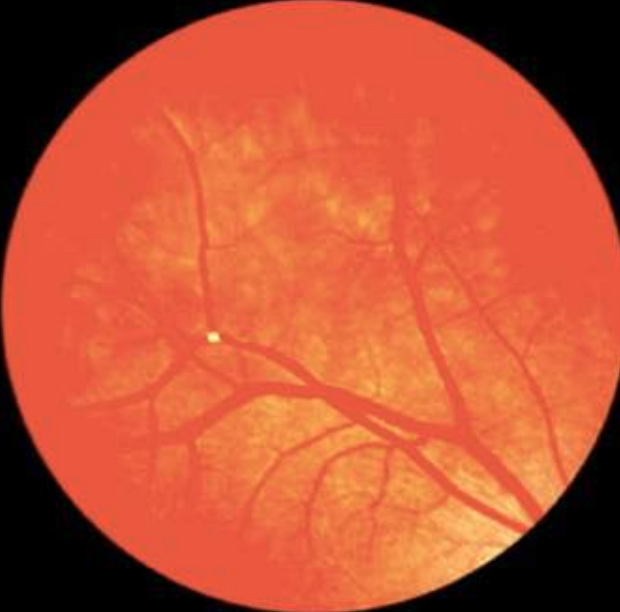 |
More timely testing for glaucoma, either by visual field testing or with retinal nerve fiber layer imaging, can be the difference in preserving sight in individuals with a history of RVO. Photo: Julie Rodman, OD. Click image to enlarge. |
New research presented Wednesday afternoon at ARVO in New Orleans sought to determine how frequently patients with retinal vein occlusion (RVO) undergo glaucoma screening tests, since RVO is a known risk factor for open-angle glaucoma (OAG).
Patients who had developed either a branch or central RVO without previous history of glaucoma were included in the study. Those who ended up diagnosed with OAG after RVO were matched 2:1 by age and sex and compared with those not diagnosed with glaucoma. The case-control analysis included primary outcomes of length of time to first screening through visual field testing or retinal nerve fiber layer imaging.
A total of 1,145 RVO patients were included. Of those, 4.5% were diagnosed with OAG (n=51) an average of 5.5±6.1 years later. Average RVO age of diagnosis was 65.2±12.9 (57% male). A little more than half (57%) had central RVOs. Eyes that ended up progressing to OAG displayed higher intraocular pressure and a larger cup-to-disc ratio at the time of RVO diagnosis. A higher frequency of glaucoma screening tests were performed on patients diagnosed with OAG. Visual field testing was obtained later than retinal nerve fiber layer imaging on average, at 2.1±3.1 vs. 1.6±3.2 years after RVO diagnosis. At the time of OAG diagnosis, mean visual field deviation was greater in eyes with RVO history than with fellow eyes. However, retinal nerve fiber layer thickness was actually similar between eyes at diagnosis.
The authors highlighted the large number of RVO patients who are still not assessed for glaucoma risk, despite this well-known association between the two diseases. They concluded that “timely appropriate glaucoma testing for patients who have an RVO is vital to avoid delays in OAG diagnosis and preserve vision.”
Original abstract content © Association for Research in Vision and Ophthalmology 2023.
Muhtaseb AR, Huther A, Alwreikat A, Ramsey D. Delay in screening risks underdiagnosis of open-angle glaucoma in patients with retinal vein occlusions. ARVO 2023 annual meeting. |

